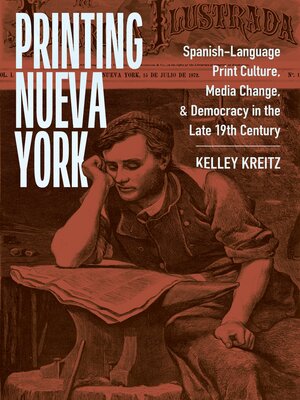Printing Nueva York
ebook ∣ Spanish-Language Print Culture, Media Change, and Democracy in the Late Nineteenth Century · America and the Long 19th Century
By Kelley Kreitz

Sign up to save your library
With an OverDrive account, you can save your favorite libraries for at-a-glance information about availability. Find out more about OverDrive accounts.
Find this title in Libby, the library reading app by OverDrive.



Search for a digital library with this title
Title found at these libraries:
| Library Name | Distance |
|---|---|
| Loading... |
Uncovers the network of Spanish-language writers and editors in 19th-century New York, whose media innovations fueled anticolonial struggles and democratic ideals
At the end of the nineteenth century, New York City was a vital hub for writers from Latin America, providing a haven of press freedom and the latest printing technology. In Printing Nueva York, Kelley Kreitz reexamines the development of mass media in the United States by highlighting the significant contributions of Spanish-language newspapers and magazines created by US-based Latinx writers, editors, and their allies. This dynamic, hemispheric network of collaborators used a mix of storytelling and strategic media engagement to model democratic principles centered on equality and collective action.
Kreitz's work offers a fresh look at U.S. media and literary history, challenging established narratives that have primarily focused on English-language publications. Through a vivid analysis of innovative figures such as José Martí, Rafael Serra, and Sotero Figueroa, the book uncovers a rich intellectual exchange that crossed national and linguistic borders. Unlike many Anglophone outlets that emphasized passive consumption, these trans-American media networks promoted active participation, cultural exchange, and collective mobilization to address pressing issues of the time, including colonialism, anarchism, and the pursuit of economic, gender, and racial equality.
Printing Nueva York demonstrates how early Latinx writers and editors redefined what democracy could be, offering insights that are highly relevant to our current digital age. The book encourages readers to consider how storytelling, participation, and the transformative power of technology can continue to drive the potential of contemporary media to build a more democratic future.







